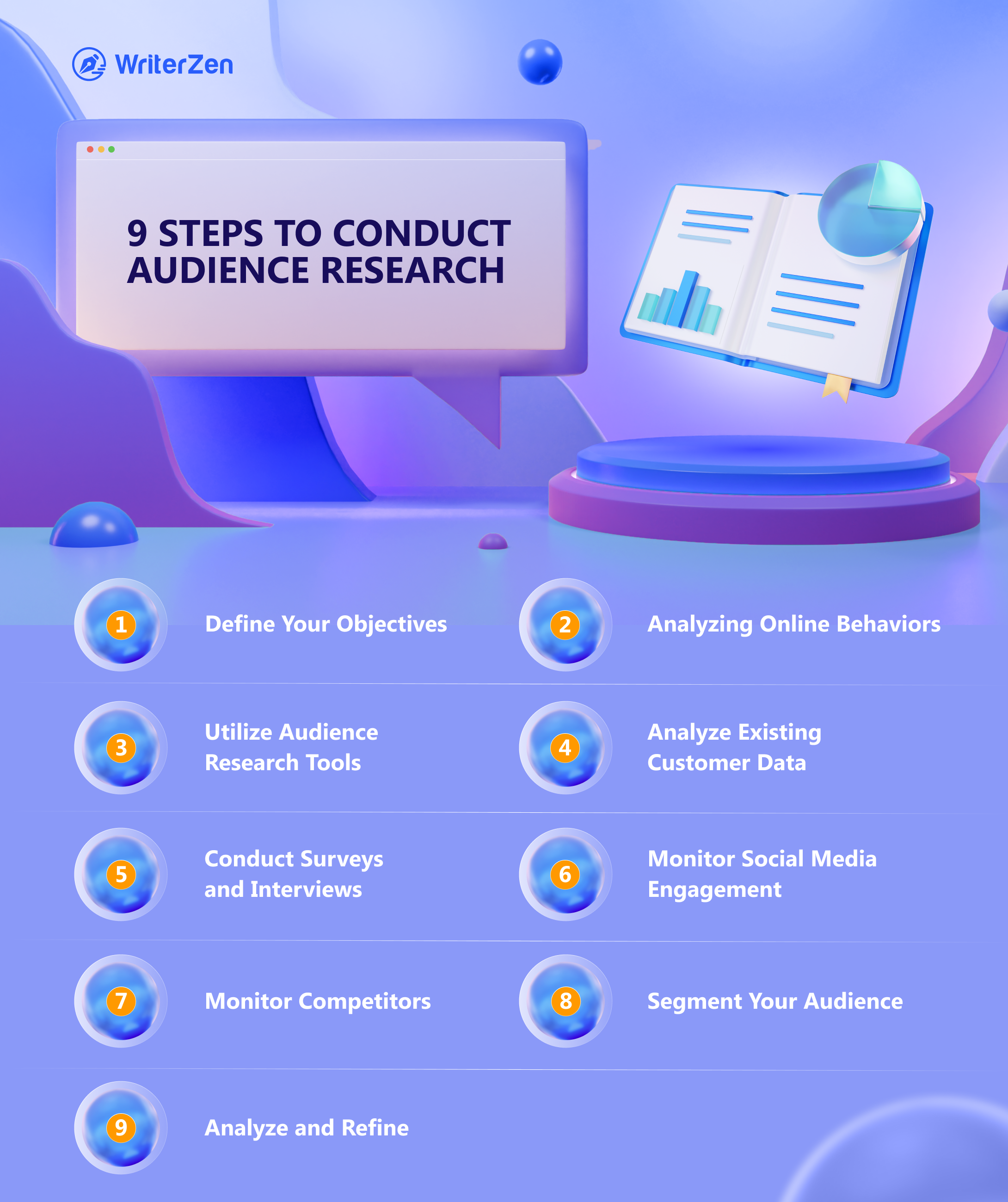To conduct audience research for software services, follow these key steps:
-
Define Research Goals: Clearly specify what you want to learn about your audience, such as their needs, preferences, pain points, and behaviors related to software use.
-
Identify the Target Audience: Determine who your potential users are by analyzing demographics, psychographics, user roles, company size, and behavior patterns. Use existing market research, customer data, and analytics tools to profile your audience.
-
Collect Data: Use a combination of qualitative and quantitative methods:
- Surveys and Questionnaires to gather structured feedback on user needs and preferences.
- Interviews and Focus Groups for in-depth insights and user opinions.
- Observational Studies or usability testing to see how users interact with software.
- Analytics Tools (e.g., Google Analytics, Mixpanel) to track user behavior and engagement patterns.
-
Analyze Data: Use statistical analysis, data visualization, and segmentation to identify trends, common pain points, and user expectations. Look for patterns that can inform software features and marketing strategies.
-
Segment the Audience: Group users by relevant criteria such as industry, company size, user role, or behavior to tailor messaging and product development effectively.
-
Apply Insights: Use the research findings to refine software features, improve user experience, and craft targeted marketing messages that resonate with specific audience segments.
-
Use Audience Research Tools: Employ specialized software platforms that integrate multiple data sources and provide real-time insights, such as All-In-One Research Suites, Qualaroo for surveys, or SparkToro for online audience intelligence. These tools help streamline data collection, analysis, and visualization.
-
Continuous Research: Audience research is ongoing. Regularly update your data and insights to adapt to changing user needs and market trends.
Summary Table of Key Steps and Tools
| Step | Description | Tools/Methods Examples |
|---|---|---|
| Define Goals | Clarify what you want to learn | Internal planning |
| Identify Audience | Profile demographics, roles, behaviors | Market reports, CRM data, analytics |
| Collect Data | Surveys, interviews, analytics, focus groups | Qualaroo, Google Analytics, Mixpanel |
| Analyze Data | Statistical and visual analysis | Excel, Tableau, data visualization tools |
| Segment Audience | Group users by relevant criteria | CRM segmentation, analytics platforms |
| Apply Insights | Inform product development and marketing | Product teams, marketing campaigns |
| Use Research Tools | Utilize integrated platforms for efficiency | All-In-One Research Suites, SparkToro |
| Continuous Research | Update insights regularly | Ongoing surveys, analytics monitoring |
By following these steps and leveraging appropriate tools, you can gain a deep understanding of your software service audience, leading to better product-market fit and more effective marketing strategies.





